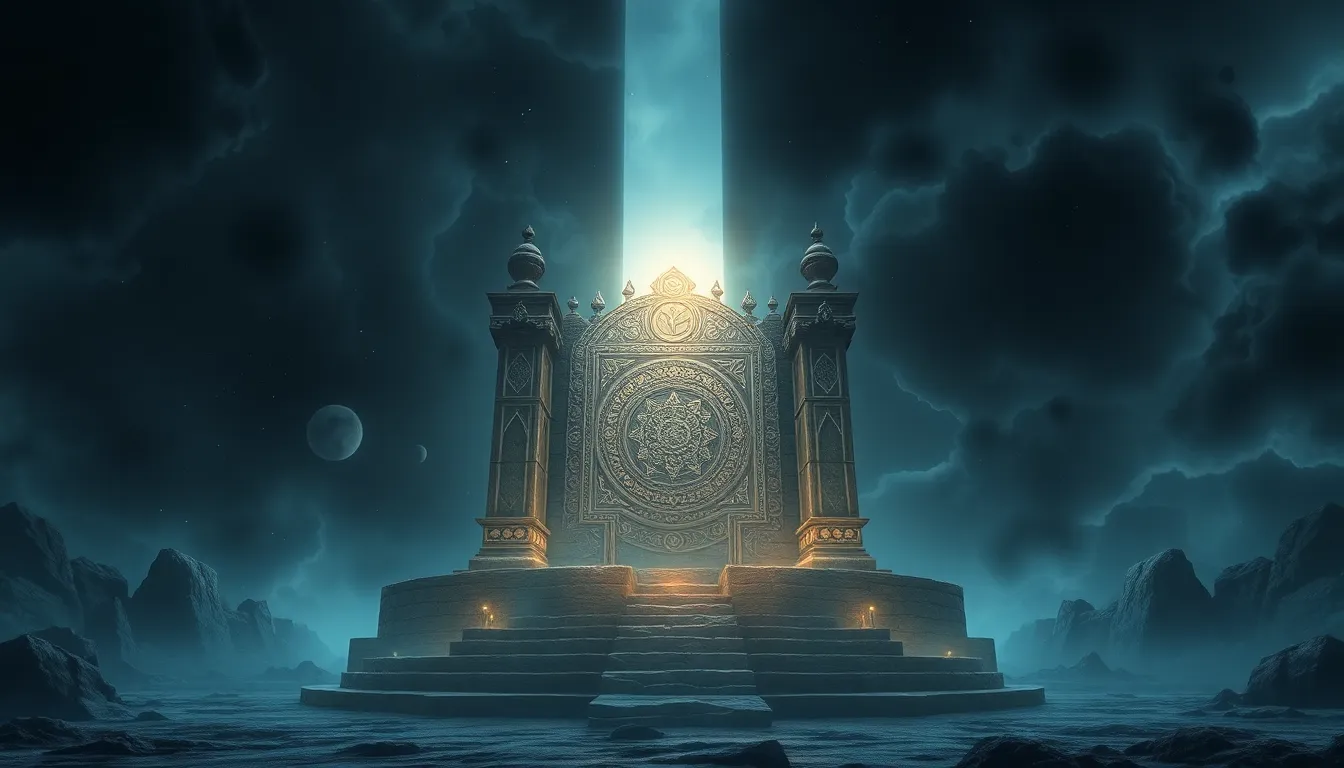The Stone of Destiny: The Mythical Throne of Kings
Introduction to the Stone of Destiny
The Stone of Destiny, also known as the Stone of Scone, is a symbol steeped in history and legend, representing the very essence of Scottish monarchy. This ancient stone has been the focal point of royal ceremonies for centuries, believed to be a crucial element in the coronation of Scottish kings. It is said that whoever sits upon the Stone is destined to rule, thus intertwining the stone’s fate with the lineage of Scottish royalty.
Historical Origins of the Stone
The origins of the Stone of Destiny are shrouded in mystery and debate. Several theories have emerged regarding its provenance:
- Ancient Roots: Some historians trace the stone’s history back to biblical times, suggesting it might be the stone mentioned in the Old Testament, associated with Jacob.
- Scottish Legend: According to Scottish folklore, the stone was brought to Scotland by the Scots from Ireland, used in coronation rites since before the 9th century.
- Roman Connections: Others propose that the stone could have Roman origins, possibly linked to the practice of using sacred stones in leadership rituals.
Regardless of its exact origins, the Stone of Destiny has long been tied to the legitimacy of kingship in Scotland.
The Stone in Scottish Coronation Rituals
The Stone of Destiny played a pivotal role in the coronation rituals of Scottish kings. During these ceremonies, the Stone was placed beneath the coronation chair, known as the Scone or Coronation Chair. The rituals surrounding this event were both solemn and grand, often involving:
- Processions of nobles and clergy.
- Prayers and blessings from the church.
- The anointment of the king with holy oil.
Notable historical figures associated with the Stone include:
- Macbeth: The infamous king of Scotland, whose reign was marked by ambition and treachery.
- Robert the Bruce: A key figure in the Scottish Wars of Independence, who sought to reaffirm the legitimacy of his reign through the Stone.
The Stone’s Journey Through Time
The history of the Stone of Destiny is marked by significant events that reflect the turbulent nature of Scottish history. Key moments include:
- Theft in 1296: The Stone was taken by King Edward I of England as a trophy of conquest, symbolizing the subjugation of Scotland.
- Return in 1950: A group of Scottish nationalists famously stole the Stone from Westminster Abbey, returning it to Scotland, albeit temporarily.
- Restoration in 1996: The Stone was officially returned to Scotland, where it is now housed in Edinburgh Castle, symbolizing a restoration of Scottish pride.
Throughout these events, the Stone has served as a powerful symbol during key historical conflicts, embodying the struggle for Scottish independence and identity.
The Symbolism of the Stone of Destiny
In Scottish culture, the Stone of Destiny represents more than just a physical object; it is a symbol of power, legitimacy, and the right to rule. Its significance can be understood through various lenses:
- Royal Authority: The Stone is a testament to the divine right of kings, believed to confer legitimacy upon the monarch.
- National Identity: The Stone embodies the spirit of Scotland, acting as a rallying point for national pride and heritage.
The Stone’s Influence on National Identity
The Stone of Destiny has played a crucial role in shaping the Scottish nationalist movement. Its historical significance has made it a powerful symbol for those advocating for Scottish independence and self-determination. Key influences include:
- Symbol of Resistance: The Stone has been embraced as a representation of Scotland’s enduring spirit against English domination.
- Heritage and Pride: It has become a cherished emblem of Scottish heritage, fostering a sense of pride among Scots worldwide.
Modern-Day Significance of the Stone
Today, the Stone of Destiny is housed in Edinburgh Castle, where it continues to draw attention and intrigue from locals and tourists alike. Its current status includes:
- Public Interest: The Stone remains a significant attraction, drawing thousands of visitors who seek to connect with their heritage.
- Ceremonial Use: It is expected to be used in future coronation ceremonies for the British monarchy, maintaining its relevance in contemporary times.
The Stone of Destiny in Popular Culture
The Stone of Destiny has also found its place in popular culture, inspiring various forms of artistic expression:
- Literature: The Stone has been featured in numerous novels and historical accounts, often highlighting its mythical qualities.
- Film: Movies such as “The Stone of Destiny” (2008) dramatize the Stone’s theft and its significance to Scotland.
- Art: Artists have depicted the Stone in various works, capturing its essence as a cultural icon.
Controversies and Debates Surrounding the Stone
The Stone of Destiny has not been without its controversies. Ongoing debates include:
- Ownership: Discussions about whether the Stone should remain in Scotland or be returned to Westminster Abbey continue to spark passionate arguments.
- Cultural Heritage: Perspectives vary among historians, politicians, and the public regarding the Stone’s role as a national treasure versus a contested artifact.
Conclusion: The Enduring Legacy of the Stone of Destiny
The Stone of Destiny stands as a powerful testament to Scotland’s rich history and cultural identity. Its enduring legacy continues to shape the narrative of Scottish nationalism and pride. As discussions around heritage and identity evolve, the Stone remains a poignant symbol, reminding us of the complex tapestry of Scotland’s past and its implications for the future.




